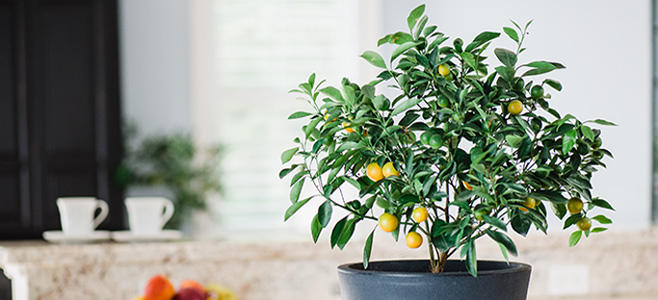
Orange trees are the most widely grown fruit tree in the world. The first orange tree arose as a hybrid between a pomelo citrus tree, and a mandarin. Today orange, trees consist of many varieties that are prized for their sweet, tangy flesh and nutritious juice, making them one of the world’s most popular fruits.
Despite the orange’s popularity, many people wouldn’t think it was possible to grow their own oranges at home. The good news is that you don’t have to live in California, Florida or Texas to grow your own orange tree. And if you get a dwarf navel orange tree, you don’t even need that much space.
Advantages to Growing Dwarf Citrus Trees
You can find a wide variety of dwarf citrus trees for sale at Citrus.com. The only difference between a dwarf fruit tree and a regular fruit tree is the size. While a regular citrus tree will grow to over 30 feet high, dwarf citrus trees only grow to between 6 and 12 feet. When kept in a container and with proper pruning, you can keep them even smaller, but they’ll still produce regular-sized fruit if properly cared for. Growing a dwarf citrus tree in the ground will save space in your yard, but keeping it in a pot will help you keep it alive through the winter months because you can move your tree indoors when the temperature falls.
Some fruit trees (like apple and pear trees) need to be grown in relative proximity to other fruit trees of their kind in order to produce fruit. The great thing about many types of citrus trees (like the dwarf mandarin orange tree) is that they are self-pollinating, so if you’re limited on space you don’t have to keep more than one tree to get fruit.
Another great advantage to growing your own dwarf citrus tree is that you grow varieties of fruit that may be harder to find in local grocery stores. For instance, if you enjoy a more exotic variety of orange, you can choose to grow a Dwarf Blood Orange Tree at home.
Keeping and Caring for Dwarf Orange Trees
When it comes to growing your own orange tree or other online citrus trees, the main things to keep in mind are how to plant, where to plant, and how to care for your budding fruit. Many dwarf citrus trees are surprisingly low maintenance, but you do need to be conscientious about caring for them.
- Location, location, location. Where you keep your dwarf orange tree is important. Before it arrives, make sure to choose a spot to keep it where it will get plenty of light. All citrus trees need at least 4-6 hours of full sunshine every day in order to thrive and bear fruit. If this is a problem in or around your home, you can supplement the sunshine your tree will be exposed to with a plant grow light.
- Housing. Whether you replant your tree right away or wait until it grows a bit before potting it up, make sure the container has adequate drainage. Use a container with wide diameter instead of a deep one since dwarf citrus trees have shallow, spreading root systems. Choose a good potting soil and add a source of humidity (setting the pot on top of a shallow tray filled with water and rocks so it’s out of the water works well) when keeping the tree indoors during the winter.
- Temperature. Citrus trees do best in warm, temperate climates, and that includes your dwarf orange tree. A temperature between 55°F and 85°F is best. Some varieties of citrus can tolerate temperatures cooler than this for short periods of time but be sure to move your tree to shelter when freezing temps are expected.
- Watering. Overwatering is the cause of most citrus tree problems. When your dwarf orange tree arrives, water it deeply right after you’ve replanted it. Then, water it every 2-3 days until it’s well established. A moisture meter tool can help take a lot of the guesswork out of knowing how much water your dwarf orange tree needs; these are usually inexpensive and can be found in most gardening stores.
- Fertilizing. You should feed your growing dwarf citrus trees 3-4 times a year with a fertilizer specially formulated for citrus plants. Use a 2-1-1 ratio citrus tree fertilizer where nitrogen is double the amount of the other two elements. You can find citrus fertilizer on Citrus.com as part of our All-in-One Care Kits.
Once your dwarf orange tree begins to produce fruit, it will take the oranges up to 8 months to ripen. In the meantime, you can enjoy the beauty and fragrance the tree provides to your home.

